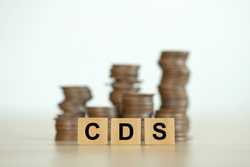How to Fill Out a Money Order

Our evaluations and opinions are not influenced by our advertising relationships, but we may earn a commission from our partners’ links. This content is created by TIME Stamped, under TIME’s direction and produced in accordance with TIME’s editorial guidelines and overseen by TIME’s editorial staff. Learn more about it.
Money orders are prepaid methods of payment and resemble a check. It is a secure form of payment since the payer needs to indicate the recipient's name, who, in turn, typically needs to show identification before being able to cash it. As money orders are accepted at many financial institutions and the recipient doesn't necessarily need a bank account, they can be a convenient way to send and receive money.
To ensure your money order is sent to the right person—and that the payment isn’t rejected—it’s key to fill out the order correctly.
Specific requirements and the information you need to purchase a money order will differ by the financial institution or company where you buy it. Most will require the same information, such as the recipient’s information and the amount you want to send.
More specifically, you may be asked to provide the following items:
Once you’ve gathered all the relevant information, you can successfully fill out your money order. In general, the following steps are applicable no matter where you purchase your money order—from your bank to the United States Postal Service (USPS). Before completing any steps, it’s best to check to see if you are filling it out correctly.
Near the top of the money order, you should see a line that begins with "Pay to the Order of" or "Pay To." This is where you will fill in the payee’s name, whether it’s an individual (like your aunt) or a business. It’s important to make sure you write it out correctly, as this is the information used when the recipient cashes the money order.
In other words, the payee you put down is the only person or entity authorized to receive payment. If the money order is lost or stolen, nobody else should be able to cash it. If the payee’s name is incorrect, however, the intended recipient may not be able to cash it.
There should be a section where you can write down your information, usually labeled "Sender," Remitter," or “From.” Here’s where you would write down your address and contact details if the recipient needs to reach you in the event of a question or concern about your payment. Ensure the contact information is current and correct.
Though not necessary, it may be useful to indicate information such as the purpose of the payment in the memo line. This section is meant to indicate what the money order is specifically for. For instance, you want to make sure the money sent goes towards your stepbrother's surprise party, so you indicate that in the memo when you send the money order to your father. When paying a bill by money order, write your billing account number in this section. Doing so can make it easier for the payee to process the payment.
Putting your signature on the money order makes the payment official since you’ve endorsed it. There should be a section or line at the bottom of the check indicating where you should sign—it could say “signature,” “signer,” or “payer signature.” This is typically on the front, since the back is reserved for the payee to endorse the money order. Before signing the money order, check that all the information you wrote down is correct.
Once you’ve paid for the money order, you can now send it off to the payee. The safest way to deliver the money order is to hand it in person to the recipient. Otherwise, you can consider mailing it. For a large amount, it’s worth paying for certified mail so you know it was delivered.
The money order should have a detachable separate section or stub that serves as a receipt. Keep this section; it contains the money order identification number and the amount you sent. That way if you find out later you made a mistake when filling it out, or you lost it, you can contact the place where you purchased the money order to cancel and replace it. Having the receipt on hand may be also useful if the recipient has issues cashing the money order.
Since a money order is a prepaid form of payment, it’s important to be careful when filling one out and getting it to the recipient. If you leave the payee blank and lose the money order, anyone who finds it can cash it. Even if you indicate the payee’s name, canceling and having it replaced could incur an additional charge. Handing it to the recipient directly or using certified mail can be worth the time or extra cost.
You can use cash or your debit card anywhere that will issue you a money order. Many major banks, including Chase and First Citizens Bank, allow you to purchase money orders for a fee. In some cases—if you’re an existing customer or have a certain type of bank account (such as a particular savings or money market account held there)—you can get one for free. Other places to purchase a money order include the U.S. Postal Service, check cashing retailers, and money remitters (many of which are located within major retailers and grocery stores).
Alternatives include a cashier's check, a prepaid debit card, an online bank transfer, or using money transfer apps. Each comes with its own pros and cons, including varying fees to initiate payment.
Some pros of using a money order include that only the recipient is able to cash the payment, there is no need to have a bank account to purchase or cash one, and there are many retailers that sell them. Among the downsides: the inability to pay large amounts, that orders may get lost or be cashed by an unintended recipient (if there is no payee's name), and that it can take a while for payment to be reimbursed if you lose or cancel the money order.
You can try to cancel or replace your money order by requesting this from the bank or retailer where you purchased it. Some places, including the U.S. Postal Service, won’t allow you to cancel your money order. In most cases you will need to fill out a cancellation request form. You will probably need to provide the money order identification number—the reason you need to hold onto your receipt. Otherwise, it could take more time to locate your money order.
Reporting a stolen money ordermay take some time to confirm—in some cases up to 60 days—and could cost an additional fee. Many retailers have a website or other resource where you can check on the status of your cancellation or replacement request.
A money order works best for sending a small amount of funds to a recipient who may not have a bank account, since you don’t need one to cash it. They can also be a great option for those who require payments in the mail, and you want to guarantee that the payment won’t bounce, as a regular check from a bank could.
A convenient location is the best source and fortunately, there are many.You can purchase money orders at many banks and credit unions and at the U.S. post office, and at check- cashing companies, major money remittance companies, even grocery stores. Make sure you understand the fees and how to fill out a money order correctly to ensure that payment is going to the right person or company.
The information presented here is created by TIME Stamped and overseen by TIME editorial staff. To learn more, see our About Us page.



